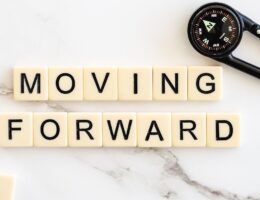You can break negative cycles by first recognizing the patterns in your behavior and understanding your emotional triggers. Start by identifying what you allow to drain your energy. Set boundaries to protect your mental health and practice self-awareness through journaling and mindfulness. Cultivating a positive mindset can transform your responses to challenges, reinforcing healthier habits. Self-compassion is essential during this process, so celebrate your progress and stay committed to change. By acknowledging your strengths and weaknesses, you'll begin to shift your perspectives on life. There's so much more you can explore to support this transformative journey.
Understanding Negative Cycles
Negative cycles often creep into our lives unnoticed, yet they can profoundly impact our well-being. You might find yourself reacting to emotional triggers that lead to patterns of negative reinforcement. This means you're reinforcing unwanted behaviors, often without realizing it. For instance, when stress arises, you may turn to unhealthy coping mechanisms, creating a cycle that feels impossible to break. These reactions often stem from unresolved emotions or past experiences, which shape your current responses. Recognizing the negative effects of worrying can be a critical step toward breaking these cycles and fostering a healthier mindset. Additionally, acknowledging how toxic behaviors shape interactions can help you identify and change detrimental patterns in your life. Engaging in activities that promote self-compassion can significantly assist in mitigating the impact of these negative cycles.
Recognizing Your Patterns
How often do you find yourself falling into the same emotional traps? Recognizing your patterns is essential for breaking negative cycles.
Start by engaging in behavior analysis; reflect on your reactions and emotions in different situations. Ask yourself what triggers these responses—identifying these triggers is key to pattern recognition. Facing fears can also reveal that some triggers may be less intimidating than they seem. Additionally, developing emotional stability can empower you to navigate these triggers more effectively.
You might notice that certain people or circumstances consistently lead you to feel angry, anxious, or defeated. Documenting these moments can help you see the repetition more clearly. Understanding sensitivity can further enhance your ability to manage these patterns and responses.
Once you understand your patterns, you can begin to address them. Awareness is the first step toward change. By recognizing these recurring behaviors, you empower yourself to break free and create healthier emotional responses in the future.
The Impact of Allowing

While you work to break free from negative cycles, allowing yourself to feel emotions without judgment plays an essential role in the healing process. This acceptance awareness helps you assess the impact of your feelings, fostering empowerment strategies that can counteract change resistance. Additionally, self-forgiveness is a crucial step towards emotional liberation, enabling you to move forward without the weight of past grievances. Embracing individual journeys allows for personal growth and recognition that healing is not a linear process.
By acknowledging the emotional toll of unhealthy acceptance, you'll start to see the behavioral implications of your choices. Establishing boundaries becomes vital; they protect you from allowing consequences that perpetuate negative patterns.
Implementing accountability measures encourages growth and reinforces the importance of your well-being. Remember, understanding the impact of allowing emotions can transform your journey, promoting healthier behaviors and a more fulfilling life. Additionally, practicing self-compassion and forgiveness can significantly enhance your emotional resilience during this process.
Identifying Triggers
To break negative cycles, you first need to recognize your emotional responses. Pay attention to the situations that spark these feelings and notice any repeating behavioral patterns. Developing emotional strength is essential for effectively managing your reactions and breaking these cycles. Practicing mindfulness can also help you become more aware of your triggers and responses in real-time. Additionally, employing self-care practices can significantly reduce stress and enhance your ability to navigate emotional challenges.
Recognizing Emotional Responses
What causes those intense emotional reactions that sometimes seem to come out of nowhere? Often, it's emotional triggers linked to your past experiences.
When you encounter a situation that reminds you of these events, your brain activates established response patterns. You might feel anger, sadness, or anxiety, and it's essential to recognize these triggers before they escalate.
Start paying attention to your emotions—when do they spike? What situations or comments set you off? Identifying these patterns allows you to understand your reactions better and gives you a chance to respond differently.
Noticing Behavioral Patterns
How often do you find yourself reacting in ways that seem out of character? If you notice this happening frequently, it's time to develop your behavioral awareness.
Start by identifying triggers that lead to these unexpected reactions. Pay attention to situations, people, or emotions that spark these behaviors. Through pattern recognition, you can gain insights into your responses and understand why you react the way you do.
Jot down these observations in a journal or discuss them with a trusted friend. This process not only helps you recognize negative cycles but also empowers you to make conscious choices about how you respond.
The Role of Mindset

While you mightn't realize it, your mindset plays an essential role in breaking negative cycles. Mindset shifts can transform your approach to challenges, fostering resilience building and a growth mindset. Embracing a passion-driven life can also contribute to a more positive mindset and overall satisfaction.
By practicing positive affirmations, you reinforce your belief systems, encouraging a healthier self-image. Cognitive reframing helps you view setbacks as opportunities for growth, while self-talk awareness allows you to challenge negative thoughts. Recognizing that defeat is a universal experience can further assist in processing emotions related to challenges.
Implementing motivation strategies can elevate your emotional intelligence, enhancing your ability to manage feelings and reactions. Embracing a perspective change empowers you to see problems differently, making it easier to break free from destructive patterns. Additionally, engaging in gratitude practices can shift your focus away from negativity and create a more positive outlook.
Ultimately, by nurturing a proactive mindset, you create the foundation for lasting change in your life.
Setting Boundaries
Building on a proactive mindset, setting boundaries becomes an essential step in breaking negative cycles. You need to recognize that healthy limits are crucial for your well-being.
Start by identifying what behaviors or situations drain your energy or cause discomfort. Once you've pinpointed these, practice boundary setting by clearly defining what you'll and won't accept.
Remember, it's not about shutting people out; it's about prioritizing your mental and emotional health. Be firm but respectful when you communicate these limits.
By doing this, you empower yourself to create a more positive environment. Ultimately, consistent boundary setting helps foster healthier relationships and decreases the likelihood of falling back into negative patterns.
Take charge and protect your space!
Communicating Effectively

Effective communication is essential for breaking negative cycles and maintaining healthy boundaries. Start by practicing active listening; it shows you value the other person's perspective.
Use assertive expression to communicate your needs clearly, while empathetic responses foster understanding. Engage in open dialogue to encourage trust and minimize communication barriers.
Pay attention to nonverbal communication, as it often conveys more than words. When conflicts arise, employ conflict resolution strategies to address issues constructively.
Utilize feedback techniques to guarantee clarity in messaging, allowing both parties to feel heard. Cultivating emotional intelligence helps you navigate conversations with sensitivity, ultimately strengthening relationships.
Cultivating Self-Awareness
To break negative cycles, you need to cultivate self-awareness by recognizing your personal patterns.
Journaling can help you gain clarity about your thoughts and behaviors, while mindfulness practices offer valuable insights into your emotional responses.
Recognizing Personal Patterns
As you journey through life, recognizing personal patterns becomes essential for breaking negative cycles. By honing your pattern recognition skills, you can identify behaviors that hold you back.
Use these self-reflection techniques to gain insight:
- Observe Your Reactions: Pay attention to your emotional responses in various situations. What triggers feelings of frustration or joy?
- Identify Recurring Themes: Look for patterns in your relationships or decision-making. Are there similar issues cropping up repeatedly?
- Evaluate Your Choices: Reflect on the decisions that lead to positive or negative outcomes. What can you learn from these choices?
Journaling for Clarity
Building on your ability to recognize personal patterns, journaling serves as a powerful tool for cultivating self-awareness.
Through reflective writing, you can explore your thoughts and feelings, gaining insight into your actions and reactions. The journaling benefits are profound; it helps you clarify your emotions, identify triggers, and track your progress over time.
By putting pen to paper, you'll uncover patterns that might otherwise remain hidden, enabling you to make more informed choices. Regularly documenting your experiences allows you to reflect on your growth and setbacks, fostering a deeper understanding of your journey.
Embrace this practice to break negative cycles and create a more intentional life. It's a simple yet profound way to develop clarity and self-awareness.
Mindfulness Practices Benefits
While you navigate the complexities of daily life, incorporating mindfulness practices can greatly enhance your self-awareness.
Engaging in mindfulness meditation fosters emotional regulation, helping you manage stress effectively. By focusing on the present moment, you cultivate mental clarity and improve body awareness.
Here are three powerful mindfulness practices to contemplate:
- Mindful Breathing: Use focused attention on your breath to ground yourself and reduce anxiety.
- Gratitude Practice: Regularly reflect on what you're grateful for to shift your mindset positively.
- Body Scans: Tune into different areas of your body to enhance body awareness and release tension.
Building a Support System

To break negative cycles effectively, you need a strong support system that can uplift and motivate you.
Start by building support networks with people who understand your journey. Seek out accountability partners who'll check in on your progress and offer emotional support when you're struggling.
It's crucial to surround yourself with those who provide constructive feedback and share experiences that resonate with you. Engage in group activities that foster mutual encouragement, creating a sense of belonging.
Resource sharing can also be valuable; exchanging tips and strategies can enhance your growth.
Developing Healthy Habits
As you work to break negative cycles, developing healthy habits is essential for sustaining positive change.
By establishing healthy routines, you create a foundation that supports your journey.
Here are three habits to ponder:
- Daily Exercise: Incorporate at least 30 minutes of physical activity into your day. It boosts your mood and energy levels.
- Mindful Eating: Focus on nutritious foods and portion control. This not only nourishes your body but also fosters a healthier relationship with food.
- Consistent Sleep Schedule: Aim for 7-9 hours of sleep each night. Proper rest enhances your mental clarity and emotional resilience.
Embracing Change

Embracing change isn't just about accepting new circumstances; it's about actively seeking growth and transformation in your life.
By embracing uncertainty, you open yourself up to new opportunities and experiences. Instead of fearing the unknown, try to view it as a chance to learn and evolve. This mindset shift fosters resilience, allowing you to bounce back from setbacks and adapt to whatever life throws your way.
When you embrace change, you empower yourself to break free from negative cycles and create a more fulfilling existence. Remember, growth often lies outside your comfort zone.
Practicing Self-Compassion
Self-compassion is an essential practice that nurtures your emotional well-being and helps you navigate life's ups and downs with grace.
By engaging in self-kindness practices and compassion exercises, you cultivate a more forgiving and understanding inner dialogue.
Here are three effective strategies to enhance your self-compassion:
- Nurturing Self Talk: Replace negative thoughts with positive affirmations that reinforce your worth.
- Self Forgiveness Techniques: Acknowledge your mistakes and learn from them, allowing yourself to move forward.
- Compassion Meditation: Dedicate time to meditate on self-acceptance, fostering emotional resilience building.
Incorporating these self-care routines and inner dialogue awareness into your life will greatly improve your overall well-being, enabling you to break negative cycles more effectively.
Taking Action Steps

Now that you've practiced self-compassion, it's time to take action steps to break those negative cycles.
Start by identifying the patterns that hold you back, then set clear boundaries to protect your progress.
Finally, implement consistent actions to reinforce these changes and create a healthier path forward.
Identify Negative Patterns
As you begin to recognize the patterns that lead to negative outcomes, it's crucial to take deliberate action. Identifying these negative patterns is the first step toward breaking free from harmful behavioral cycles.
Here are three actions you can take:
- Journal Your Experiences: Write down situations where you felt stuck or unhappy. This helps you see recurring themes.
- Seek Feedback: Ask trusted friends or family if they've noticed patterns in your behavior. Sometimes, an outside perspective can highlight what you may overlook.
- Analyze Triggers: Identify what triggers these negative patterns. Understanding your triggers is key to pattern recognition and breaking the cycle.
Set Clear Boundaries
Setting clear boundaries is essential for maintaining your well-being and breaking negative cycles. Start by identifying boundary types that resonate with you, whether they're emotional, physical, or time-related.
Effective boundary communication helps others understand your limits, making boundary enforcement smoother. Remember, it's vital to be flexible; sometimes, you'll need to adjust your boundaries based on evolving situations.
Recognizing the boundary importance can lead to significant boundary benefits, like improved relationships and increased self-respect. However, be prepared for boundary challenges, as not everyone will respond positively.
If you face boundary violations, address them promptly to reinforce your limits. Taking these steps empowers you to create a healthier environment, allowing you to thrive without the weight of negative cycles.
Implement Consistent Actions
While boundaries lay the groundwork for change, implementing consistent actions is essential for breaking negative cycles.
You need to create consistent routines and develop intentional habits that align with your goals. Here are three steps to help you take action:
- Identify Triggers: Recognize what leads you back to negative patterns. Awareness is key.
- Establish Routines: Create daily or weekly schedules that prioritize positive behaviors. Stick to them.
- Track Progress: Keep a journal or use an app to monitor your actions. Reflect on what works and what doesn't.
Reflecting on Progress
Reflecting on your progress can reveal insights that propel you forward. Take time to identify your progress markers, the small wins that indicate you're moving in the right direction. These markers serve as reminders of how far you've come and the efforts you've put in.
As you engage in growth reflections, consider what strategies worked, what didn't, and how your mindset has shifted. This process isn't just about celebrating achievements; it's about understanding the journey and recognizing areas for improvement.
Staying Committed to Change

Staying committed to change requires a conscious effort to maintain your focus and motivation, especially when faced with challenges.
To build change resilience, you need effective commitment strategies that keep you on track. Here are three actionable steps to help you stay committed:
- Set Clear Goals: Define what you want to achieve and break it down into manageable tasks.
- Establish Accountability: Share your goals with someone who can support you and hold you accountable.
- Celebrate Small Wins: Recognizing your progress, no matter how small, boosts your motivation and reinforces your commitment.
Conclusion
In breaking negative cycles, remember this: what you allow is what will continue. As you reflect on your journey, consider what patterns you've noticed and what triggers set them off. The power to change lies in your hands, but it requires unwavering commitment. Will you take that vital step? Embrace self-compassion and challenge your mindset. The moment you decide to act could be the turning point. Are you ready to transform your life and create a new beginning?



